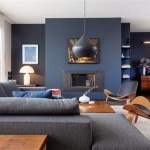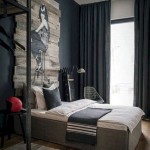Room Decor Ideas: Elevating Your Space with Photo Frames
Photo frames serve as more than just protective enclosures for cherished memories; they are integral components of interior design, capable of transforming the ambiance of any room. Strategically deployed, photo frames can add personality, warmth, and visual interest to walls, shelves, and surfaces. This article explores various approaches to incorporating photo frames into room decor, focusing on their potential to enhance aesthetics and create a cohesive living space.
Selecting the Right Frames: Style, Material, and Size
The initial step in using photo frames effectively is choosing frames that complement the overall design scheme of the room. Consider the existing color palette, furniture style, and architectural details. A minimalist room with clean lines might benefit from sleek, metal frames, while a more rustic space could be enhanced by wooden frames with distressed finishes. The material of the frame, such as wood, metal, glass, or acrylic, should be chosen to harmonize with the surrounding elements. Scale is equally important. Larger photos or prints demand larger frames, while smaller snapshots can be grouped together in a collection of smaller frames. Consistency, either in frame style or color, is crucial when arranging multiple frames to maintain visual coherence.
Beyond aesthetics, practical considerations also play a role. The type of glass or acrylic used in the frame affects the visibility and preservation of the photo. Anti-glare glass is advantageous in brightly lit rooms, while UV-protective glass safeguards photos from fading due to sunlight exposure. The backing of the frame should be sturdy and secure, ensuring that the photo is held firmly in place. Ease of access for changing photos is another factor to consider, particularly if the frames are intended for displaying frequently updated images.
Color is also a critical design element. Frames can act as a pop of color in a neutral room or blend seamlessly with existing hues for a more subdued effect. Consider the colors present in the artwork or photographs themselves. Using a frame color that picks up on a secondary color within the image can tie the whole display together. Conversely, a contrasting color can draw attention to the frame and the artwork within.
The texture of the frame can also contribute to the overall design. Frames with a smooth, polished surface offer a contemporary feel, while those with a textured or sculpted design can add depth and visual interest. Consider the texture of other elements in the room, such as furniture upholstery or wall coverings, and choose frames that complement these textures.
Arranging Photo Frames: Composition and Placement
The arrangement of photo frames has a significant impact on the overall visual effect. There are several common approaches to consider, each offering a unique aesthetic. A gallery wall, for example, involves grouping multiple frames of varying sizes and shapes to create a focal point. A grid arrangement, where frames are aligned neatly in rows and columns, provides a more structured and formal appearance. A salon-style arrangement, characterized by a more eclectic and asymmetrical layout, can add a sense of informality and personality.
Placement is equally important. The height at which frames are hung should be considered carefully. A general guideline is to hang frames with the center point at eye level. However, in areas where people are typically seated, such as a living room, the frames can be hung slightly lower. The space between frames should also be consistent and proportional to the size of the frames themselves. Overcrowding can create a cluttered appearance, while too much space can make the arrangement feel disjointed.
Consider the background against which the frames are displayed. A plain wall allows the frames and artwork to stand out, while a patterned wallpaper can add visual complexity. The color of the wall can also influence the perceived color of the frames and artwork. A dark wall can make light-colored frames appear brighter, while a light wall can soften the effect of darker frames.
Lighting is also a key consideration. Adequate lighting is essential to properly showcase the artwork within the frames. Natural light is ideal, but artificial lighting can also be used effectively. Avoid placing frames in direct sunlight, as this can cause the photos to fade over time. Consider using spotlights or track lighting to illuminate the frames and create a dramatic effect.
Another arrangement idea involves leaning frames against a wall or displaying them on shelves. This approach offers a more casual and relaxed aesthetic. It also allows for easy rearrangement of the frames as desired. Use a variety of frame sizes and shapes to create visual interest. Group the frames together to create a focal point, or scatter them throughout the room for a more subtle effect.
Thematic Approaches: Creating Cohesive Displays
A powerful way to enhance the impact of photo frames is to adopt a thematic approach. This involves curating a collection of photos that share a common subject matter, style, or color palette. For example, a collection of black and white photographs can create a sophisticated and timeless display. A series of landscapes can evoke a sense of tranquility and nature. A collection of family portraits can personalize a space and create a warm and inviting atmosphere.
The use of mats can further enhance the visual appeal of the display. A mat is a border made of cardboard or paper that surrounds the photo within the frame. It provides a visual separation between the photo and the frame, drawing the eye to the image. The width of the mat can be adjusted to suit the size of the photo and the frame. A wider mat can create a more formal and elegant look, while a narrower mat can create a more contemporary feel.
Consider incorporating other elements into the display, such as artwork, prints, or decorative objects. This can add depth and visual interest to the arrangement. Choose items that complement the theme of the photo collection. For example, a display of travel photos might be complemented by maps, postcards, or souvenirs from the destinations depicted in the photos. A display of nature photos might be complemented by plants, flowers, or natural materials such as wood or stone.
Another thematic approach involves using frames to create a timeline. This can be a particularly effective way to display family photos. Arrange the photos in chronological order, starting with the oldest photos and ending with the most recent. This creates a visual representation of the family's history and allows viewers to follow the family's journey over time. Use labels or captions to provide context and information about the photos.
The frames themselves can also contribute to the overall theme. For example, antique frames can add a vintage feel to a display of old photos. Modern frames can complement a display of contemporary artwork. Use a variety of frame styles and materials to create a visually interesting and dynamic display.
Beyond Traditional Photos: Alternative Uses for Frames
Photo frames are not limited to displaying photographs; they can be used creatively to showcase other types of artwork, objects, and even materials. Pressed flowers, fabric swatches, or even dried leaves can be framed to create unique and personalized wall decor. A frame can also be used to highlight a cherished piece of artwork created by a child or a postcard collection from travels abroad. This approach adds a personal touch to the room and transforms everyday objects into works of art.
Another alternative is to use frames to create a shadow box. This involves placing three-dimensional objects inside the frame to create a miniature display. Shadow boxes can be used to showcase collections of small objects, such as shells, stones, or buttons. They can also be used to create miniature scenes or dioramas. The possibilities are endless, limited only by the imagination.
Frames can also be used to create a decorative mirror. Simply replace the glass or acrylic in the frame with a mirror. This is a great way to add light and space to a room. Use a variety of frame sizes and shapes to create a visually interesting and dynamic display. Consider using antique frames to add a vintage feel to the mirror.
Another alternative is to use frames to create a chalkboard or whiteboard. Simply replace the glass or acrylic in the frame with a chalkboard or whiteboard. This is a great way to add a functional and decorative element to a room. Use the chalkboard or whiteboard to write notes, reminders, or create artwork.
Experiment with unconventional materials and objects within the frames. This can add a unique and personal touch to the room. For example, consider framing a piece of vintage sheet music, a dried flower arrangement, or a collection of antique buttons. The possibilities are endless, limited only by the imagination.

21 Photo Wall Ideas For Living Room Hanging Inspiration

How To Decorate With Photos Marker Girl

17 Diy Decoration Ideas Using Picture Frames Enhance The Room Decor

My Framed Photo Gallery Walls Haute Off The Rack

30 Photo Frame Designs To Decorate Your Beautiful Home

21 Photo Wall Ideas For Living Room Hanging Inspiration

17 Diy Decoration Ideas Using Picture Frames Enhance The Room Decor

21 Photo Wall Ideas For Living Room Hanging Inspiration

45 Inspiring Living Room Wall Decor Ideas Photos Shutterfly

30 Best Photo Wall Ideas And Gallery Layouts
Related Posts







